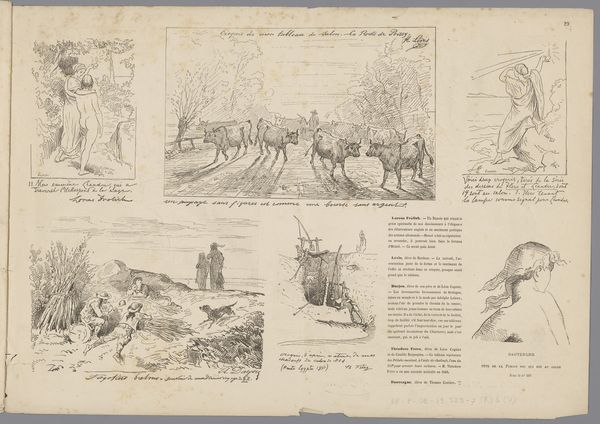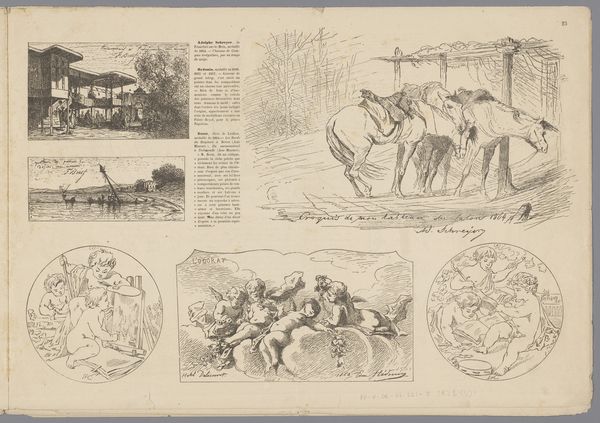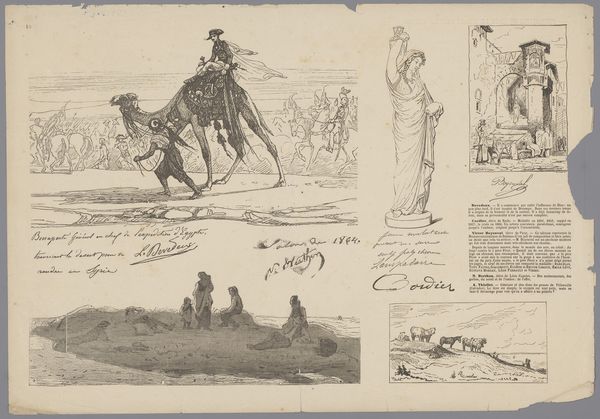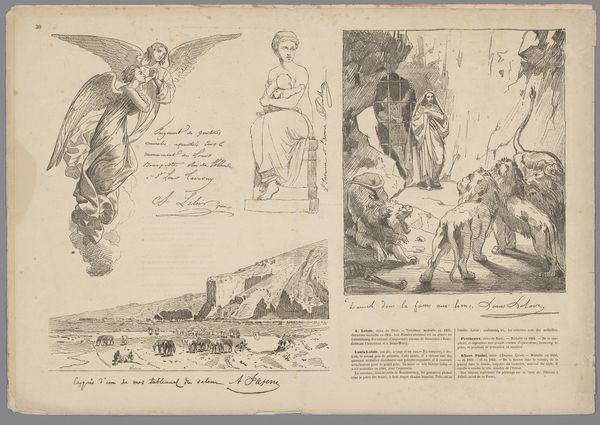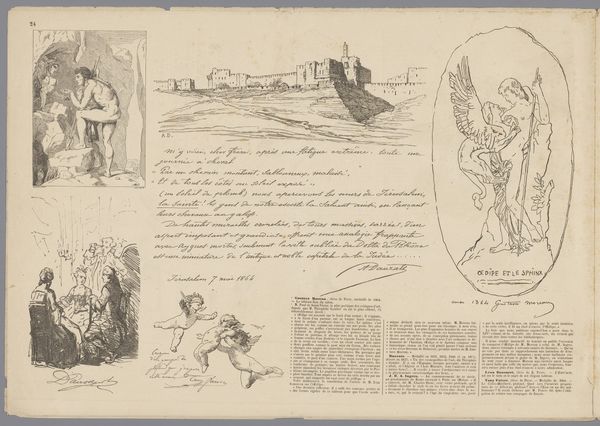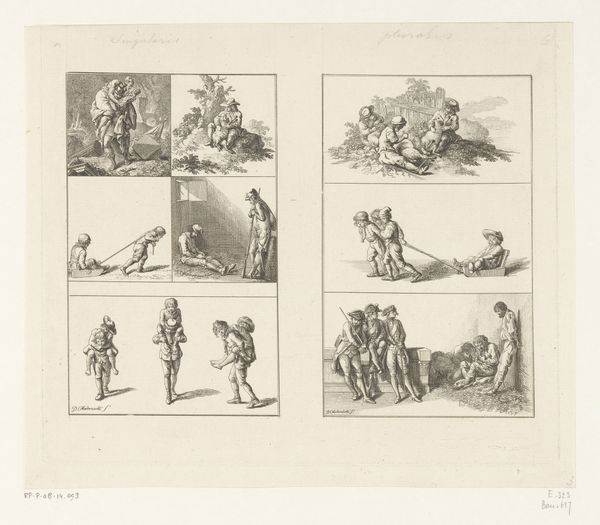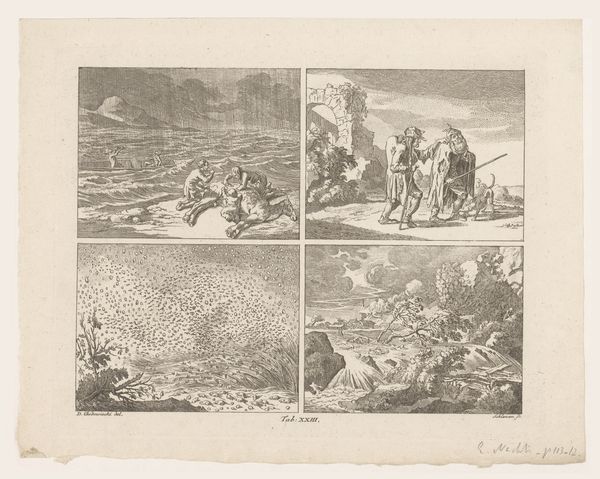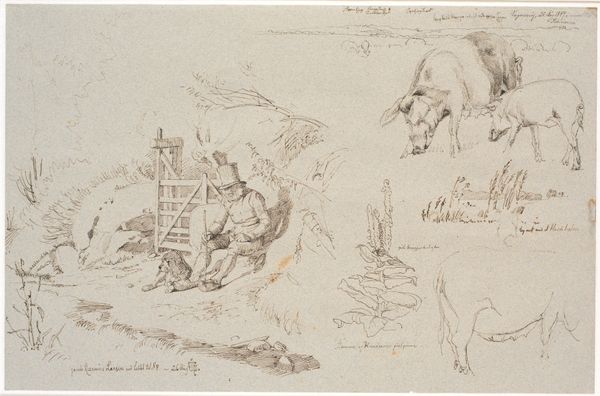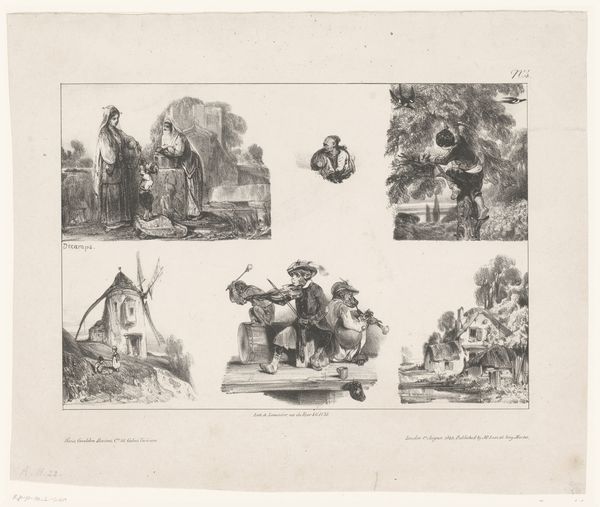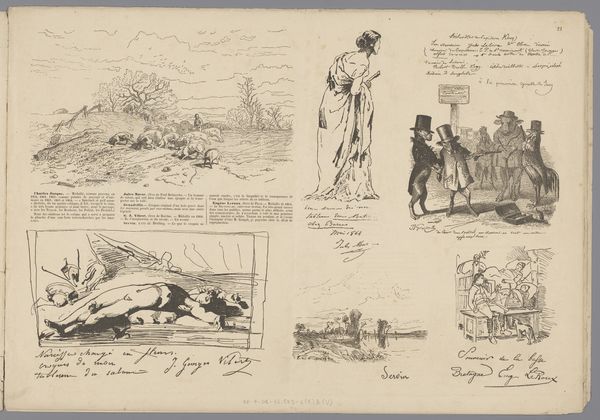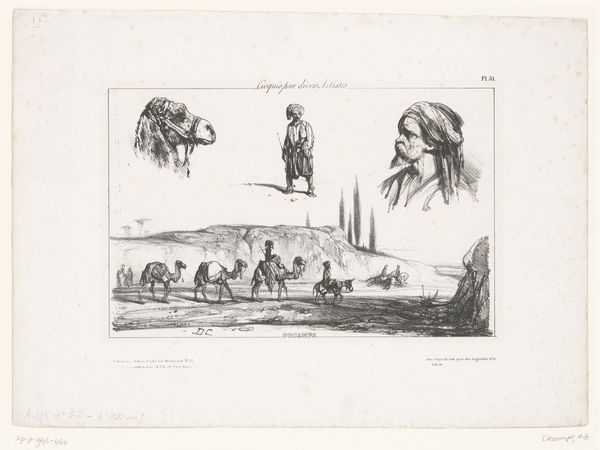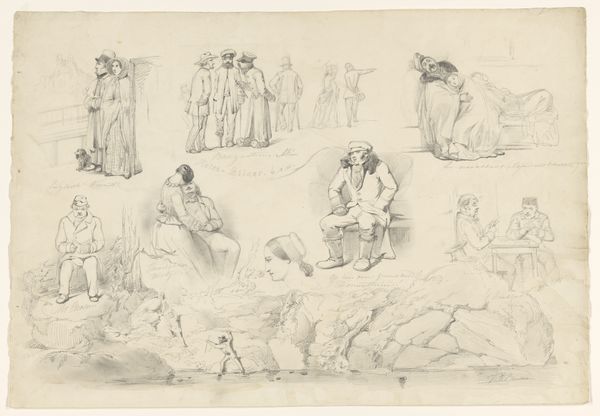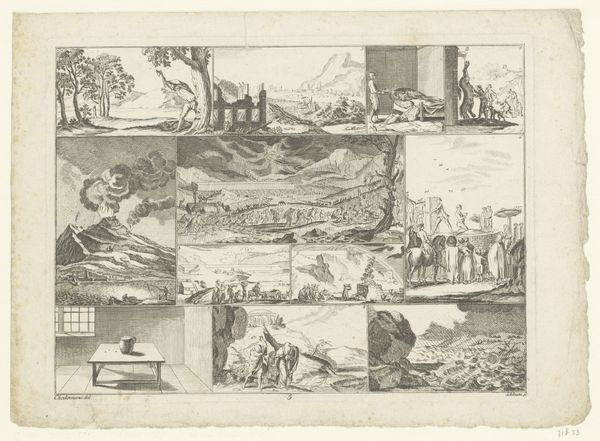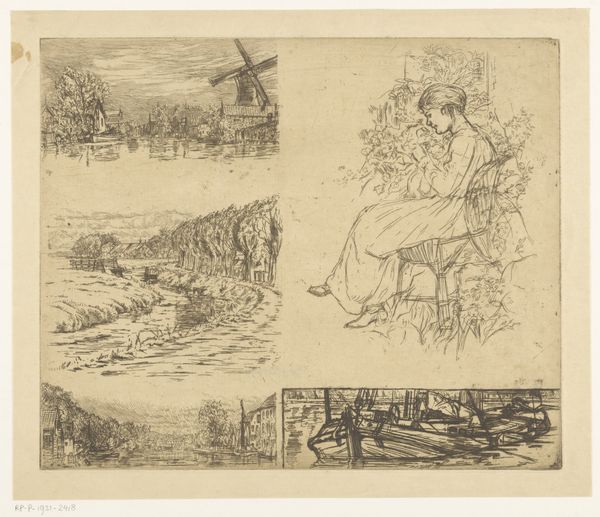
Moeder met kind, landschap met gieren, man met vaandel op slagveld, zittende vrouw, bomen en een rustende man met fez in een tentenkamp Possibly 1864 - 1866
0:00
0:00
drawing, paper, ink
#
portrait
#
drawing
#
narrative-art
#
landscape
#
paper
#
ink
#
history-painting
Dimensions: height 327 mm, width 468 mm
Copyright: Rijks Museum: Open Domain
Curator: Firmin Gillot’s sketchbook page from 1864-1866 offers us a glimpse into his diverse interests and travels. What strikes you most about this sheet of studies? Editor: It feels melancholic. There is a vulnerability in its rawness that’s particularly appealing, each vignette telling a unique story but they all share a somber emotional tone. The desolation is powerful! Curator: Gillot utilizes ink on paper to present seemingly unrelated scenes, from portraits of women to landscapes and even scenes of battlefields with vultures picking at carcasses. It is this collage effect that highlights the interrelation between disparate social contexts. Editor: Absolutely! The juxtaposition is critical. Look at the tenderness of the mother and child right next to the landscape with vultures. This points to a cycle of life and death as one of continuous interplay. The juxtaposition makes one ask what each section may have in common? It emphasizes mortality. Curator: The historical context is crucial here. The sketches related to battle and struggle resonate with the widespread violence of the 19th century in Europe and colonial contexts. Gillot presents a history-painting reduced to only its fundamental essence: violence. But how do the portraits of women then fit into this larger picture? Editor: They remind us that, in the midst of these monumental, masculine, historical struggles, personal experiences still take place and that their importance is not negated by large-scale, global events. The mundane persists and contrasts the glorification of warfare by historicists and conservatives of the time. Curator: Indeed, these compositions explore multiple perspectives, merging the domestic sphere with broader conflicts and environmental devastation, while being constantly aware of the individuals impacted by it all. This sketchbook encapsulates Gillot’s nuanced perspective, acknowledging beauty alongside despair, to bring about social awareness. Editor: Precisely! These scattered vignettes underscore the interconnectedness of humanity—a shared fate regardless of social status or location. I love this sense of solidarity and intersection. The page creates an archive for memory.
Comments
No comments
Be the first to comment and join the conversation on the ultimate creative platform.
